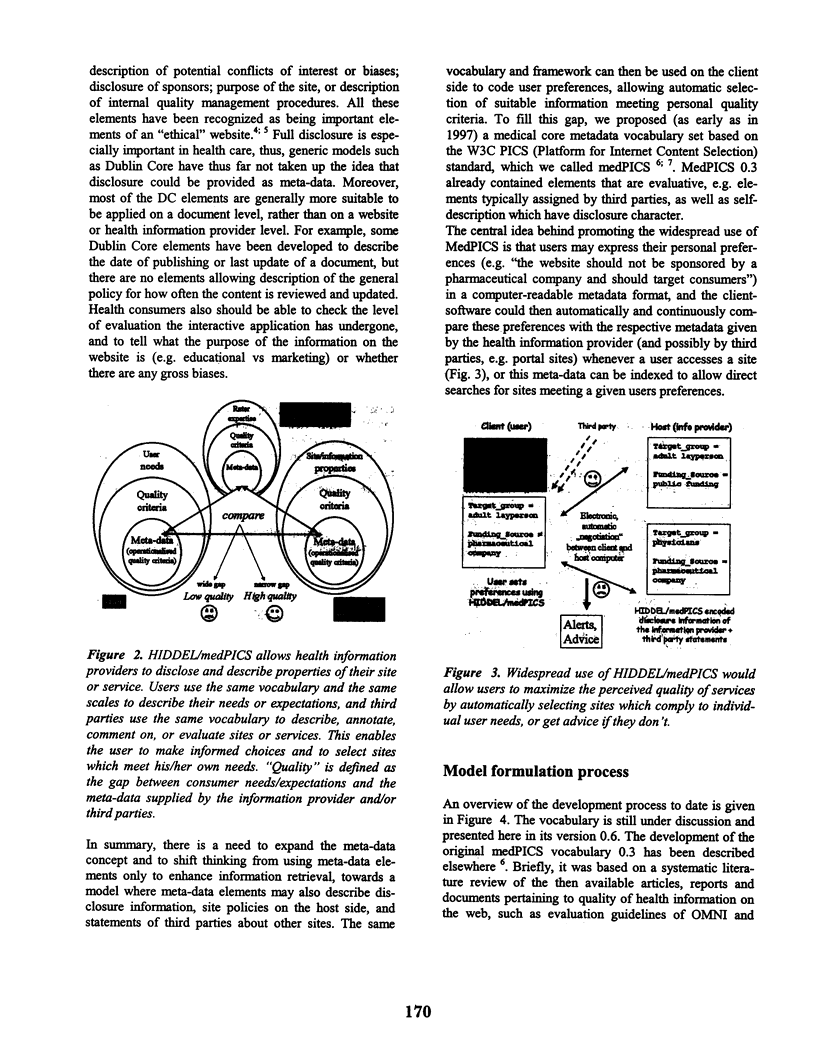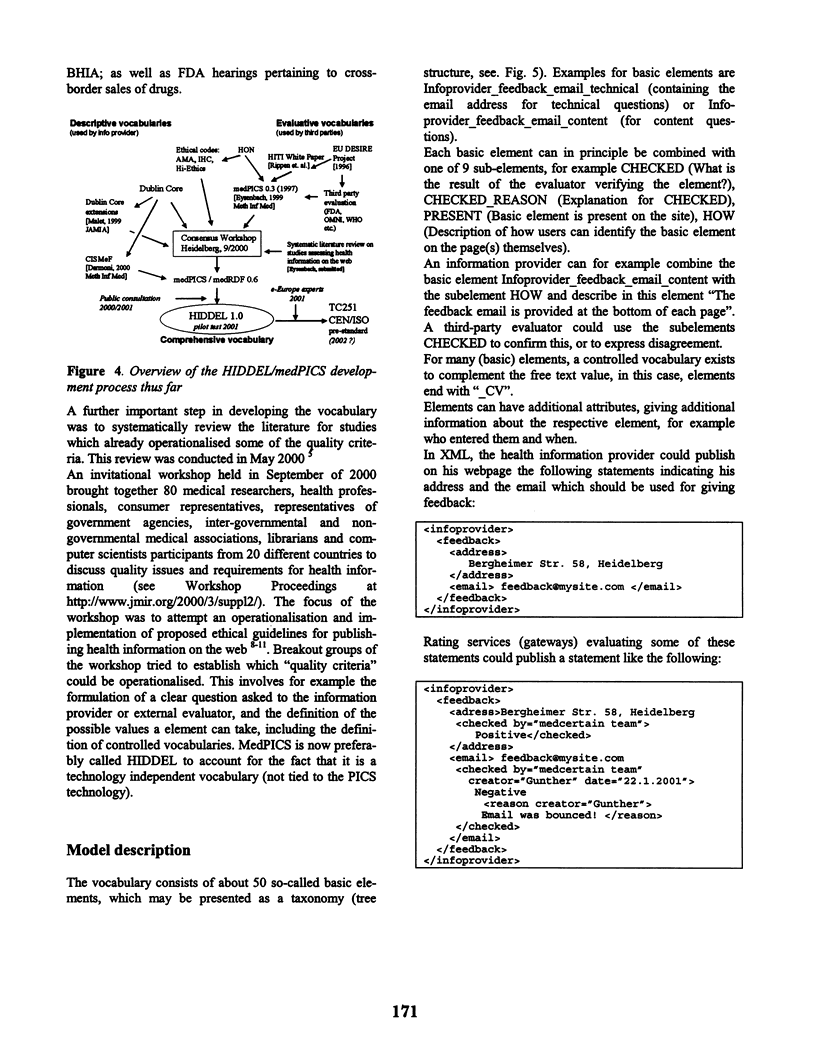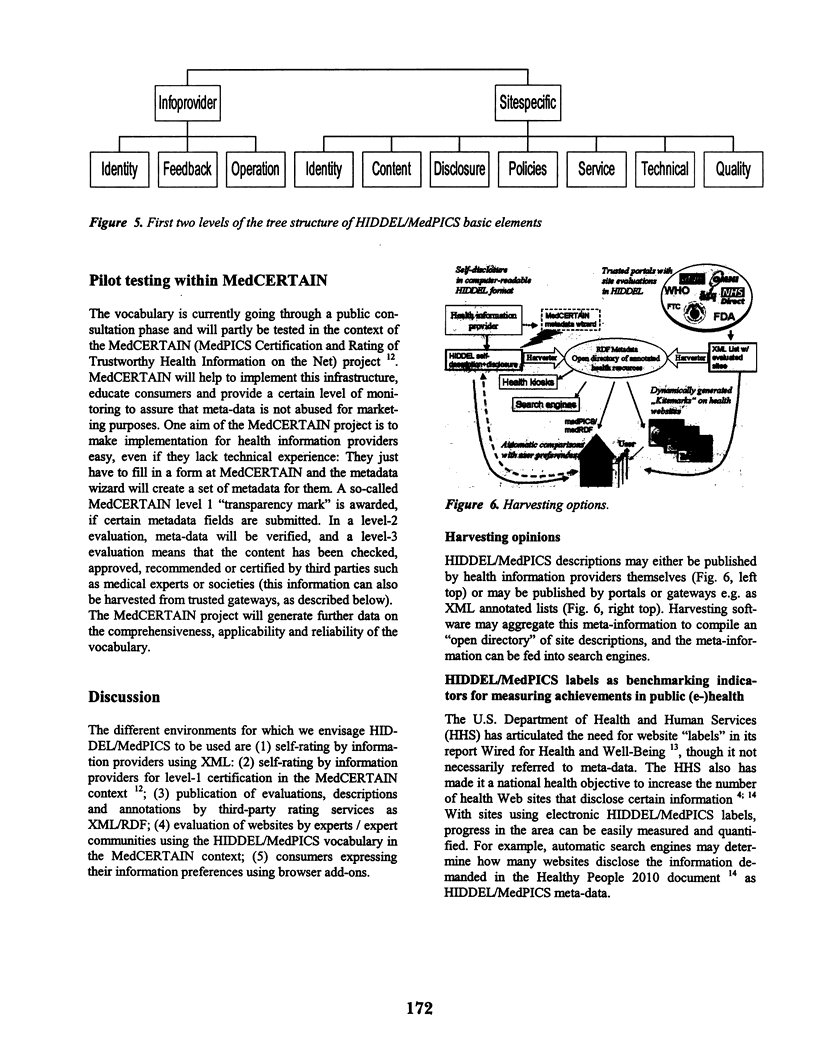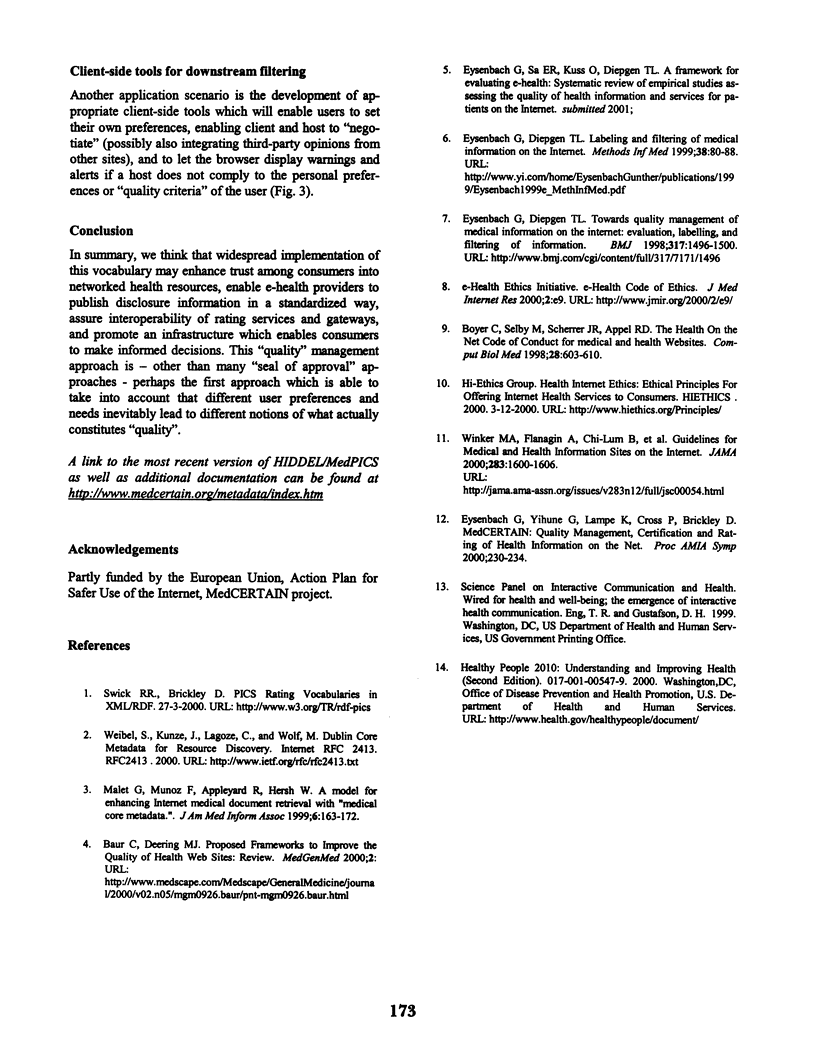Abstract
We describe HIDDEL (Health Information Disclosure, Description and Evaluation Language), formerly known as medPICS (platform for Internet content selection in medicine), a metadata vocabulary designed to enhance transparency, trust and quality of health information on the web. The vocabulary may be used (1) by webmasters to self-describe their contents and policies; (2) by infomediaries (e.g. Healthfinder, NHS Direct/NeLH), e.g. third party evaluators, rating or portal services, to annotate other websites; (3) and by users, to describe their preferences. As an XML application it conforms to the W3C's RDF Specification. The metadata vocabulary is primarily intended to enable descriptions of whole health websites or health information providers. The vocabulary is designed to provide a computer-readable electronic "label" of a health website, telling users who is behind the website, how the website is sponsored, what the con-tent, aim and target audience is, how the information was compiled, what risks the service bears, or what people say about the resource. Client-software can "read" this label automatically, compare it to the user s own set of preferences and needs, and alert and advise users.
Full text
PDF




Selected References
These references are in PubMed. This may not be the complete list of references from this article.
- Boyer C., Selby M., Scherrer J. R., Appel R. D. The Health On the Net Code of Conduct for medical and health Websites. Comput Biol Med. 1998 Sep;28(5):603–610. doi: 10.1016/s0010-4825(98)00037-7. [DOI] [PubMed] [Google Scholar]
- Eysenbach G., Diepgen T. L. Labeling and filtering of medical information on the Internet. Methods Inf Med. 1999 Jun;38(2):80–88. [PubMed] [Google Scholar]
- Eysenbach G., Diepgen T. L. Towards quality management of medical information on the internet: evaluation, labelling, and filtering of information. BMJ. 1998 Nov 28;317(7171):1496–1500. doi: 10.1136/bmj.317.7171.1496. [DOI] [PMC free article] [PubMed] [Google Scholar]
- Eysenbach G., Yihune G., Lampe K., Cross P., Brickley D. MedCERTAIN: quality management, certification and rating of health information on the Net. Proc AMIA Symp. 2000:230–234. [PMC free article] [PubMed] [Google Scholar]
- Malet G., Munoz F., Appleyard R., Hersh W. A model for enhancing Internet medical document retrieval with "medical core metadata". J Am Med Inform Assoc. 1999 Mar-Apr;6(2):163–172. doi: 10.1136/jamia.1999.0060163. [DOI] [PMC free article] [PubMed] [Google Scholar]
- Winker M. A., Flanagin A., Chi-Lum B., White J., Andrews K., Kennett R. L., DeAngelis C. D., Musacchio R. A. Guidelines for medical and health information sites on the internet: principles governing AMA web sites. American Medical Association. JAMA. 2000 Mar 22;283(12):1600–1606. doi: 10.1001/jama.283.12.1600. [DOI] [PubMed] [Google Scholar]


